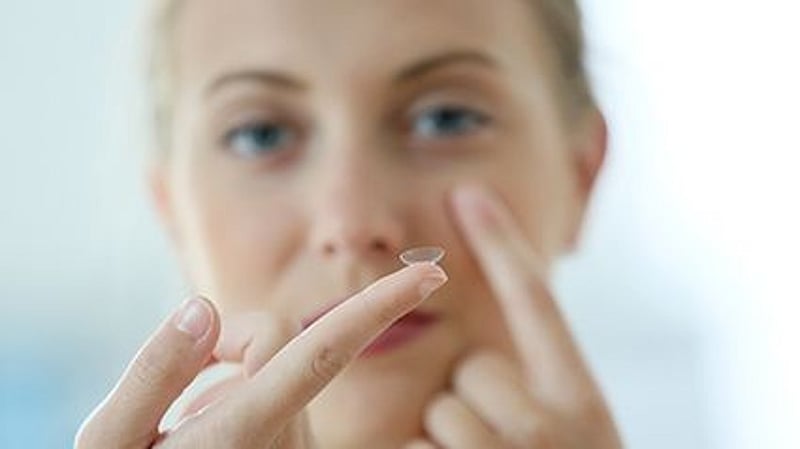Manténgase sano!

- Cara Murez
- Posted September 25, 2022
Reusing Contact Lenses Raises Odds for Rare Eye Infection
Although wearing reusable contact lenses is generally safe, it can be associated with a greater risk of a rare eye infection, new British research shows.
In the study, people who wore reusable contact lenses were nearly four times more likely to develop the infection called Acanthamoeba keratitis (AK) than those who wore daily disposable lenses. Risks increased for those wearing them overnight or leaving them in while in the shower.
"In recent years, we have seen an increase of Acanthamoeba keratitis in the [United Kingdom] and Europe, and while the infection is still rare, it is preventable and warrants a public health response," said lead author Dr. John Dart, of University College London's (UCL) Institute of Ophthalmology and Moorfields Eye Hospital NHS Foundation Trust.
"Contact lenses are generally very safe but are associated with a small risk of microbial keratitis, most commonly caused by bacteria, and which is the only sight threatening complication of their use," Dart said in a college news release. "Given that an estimated 300 million people across the globe wear contact lenses, it is important that people know how to minimize their risks for developing keratitis."
To study the issue, researchers recruited more than 200 patients of Moorfields Eye Hospital in London. This included 83 people with AK and 122 participants who came to eye clinics with other conditions.
The researchers found that people who wore reusable soft contact lenses had 3.8 times the odds of developing AK compared to people who wore daily disposable lenses.
Certain behaviors increased the odds. Showering with lenses in increased the odds of AK by 3.3 times, while wearing lenses overnight increased the odds by 3.9 times.
"Previous studies have linked AK to wearing contact lenses in hot tubs, swimming pools or lakes, and here we have added showers to that list, underlining that exposure to any water when wearing lenses should be avoided," said study first author and associate professor Nicole Carnt. She's an associate professor of University of New South Wales, Sydney, UCL's Institute of Ophthalmology and Moorfields Eye Hospital.
"Public pools and coastal authorities could help reduce this risk by advising against swimming in contact lenses," Carnt said in the release.
Somewhere between 30% and 62% of cases of AK in the United Kingdom, and potentially in many other countries, could be prevented if people switched from reusable lenses to daily disposables, researchers found.
Sight loss is uncommon from microbial keratitis. However, Acanthamoeba is one of the most severe types of keratitis and is responsible for about half of those contact lens users who lose their sight after such an infection. About a quarter of total patients lose more than 75% of vision or become blind after the disease. About 25% of people affected require corneal transplants to treat the disease or restore vision.
"Contact lens packaging should include information on lens safety and risk avoidance, even as simple as 'no water' stickers on each case, particularly given that many people buy their lenses online without speaking to a health professional,"Dart said. "Basic contact lens hygiene measures can go a long way in avoiding infections, such as by thoroughly washing and drying your hands before putting in your lenses."
The study findings were published Sept. 23 in Ophthalmology.
More information
The U.S. Centers for Disease Control and Prevention has more on Acanthamoeba keratitis.
SOURCE: University College London, news release, Sept. 22, 2022





